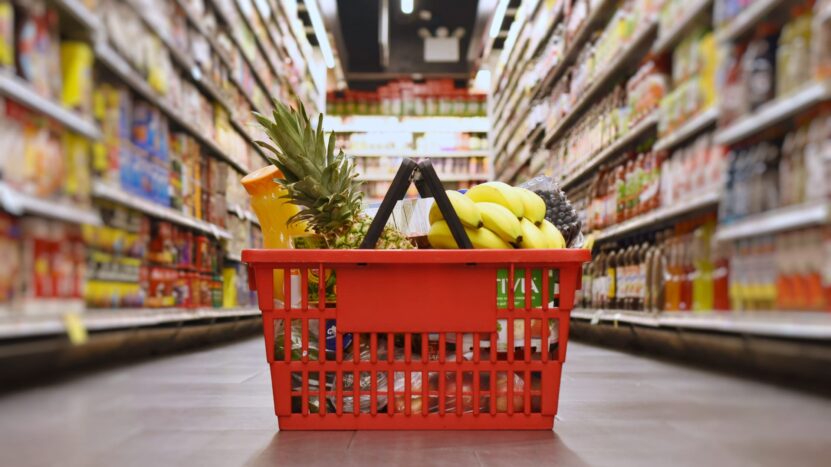Managing your money is an essential part of our lives. Do you want to save up to buy large household appliances, but your savings are not enough? Or are you pulling out the last of your stash, hoping things will get better soon? Both oblige us to look for reasons in our own consciousness and behavior. You need more money to follow the saving rules. In any case, everything is easy to change if you listen to our advice.
So, let’s talk about the most significant expense item. These are food products. This is exactly what needs to be visible and what does not help us decorate our home or show off our new clothes to our friends.
Food: how to save on the most important things

This expense item is usually the largest. And many people think that saving on groceries is very difficult. It’s actually easy. It’s enough just to create a menu of products you will cook yourself. Natural ingredients plus a little common sense will ensure your health is in order, minus the cost of the pharmacy!
Avoid processed foods and cook by yourself. Try to create a menu for the week – for example, soups, cereals, vegetables, something meat. Make a list of groceries you need for the week. Don’t buy fruits and vegetables out of season – they are usually costly. Give preference to seasonal ones, and do not buy for future use – if you need 5-6 bulbs for a week, take that many.
10 strategies for saving on groceries:
- Use the list for a supermarket or market. Go to the store only with it (you can write down notes on your phone).
- Don’t go anywhere with an empty stomach. Before going to the store, try to eat – a hungry person buys many times more.
- When choosing a product, don’t be lazy to look at the lower shelves – usually, the cheaper products are placed there, and the more expensive ones are at your eye level.
- And don’t forget about promotions. Any supermarket with promotional products should take advantage of the opportunity. Install the supermarket app on your phone and study advertisements.
- Try to purchase all the products for the week at one time. On other days, you can buy what you need fresh – milk and bread. And preferably not in a large supermarket, but in a small shop near the house.
- Skip your daily coffee at a mini-cafe on the way to work. Buy a thermal cup with a lid (or thermos) and take coffee with you from home. The same applies to snacks – a homemade sandwich will cost less than lunch at the nearest cafe.
- Don’t buy bottled water – get a bottle and fill it at home. Carry it with you to work, for walks and even when visiting.
- Keep track of your expenses in the pocketguard payment tracker or download an application that lets you know where the money went and where it came from.
- Buy bulk goods in bags, it is not necessary to take them in a box. This does not affect the quality, but the price does.
- Many products can be given a second life with a few simple steps in the kitchen. For example, stale bread dipped in eggs makes excellent croutons.
Regularly inspect your home and determine how much and what products you need to buy – you shouldn’t take 3 kg of buckwheat if your family only eats porridge once a month.
Additional recommendations

So, how else can you spend less while still eating healthy? You can switch to vegetarianism. Lack of meat in the diet reduces cholesterol levels in the body. Beans and other legumes cost much less than a piece of pork.
Use life hacks in the kitchen. For example, minced meat can be diluted with bread soaked in milk or water, as well as vegetables. Boil foods instead of frying them in a pan. This will preserve the vegetable oil, which can be added to a salad, which will be much healthier.
https://advego.com/antiplagiat/gTTsFDK9/
Expand Your Cooking Skills and Plan Your Meals
Another way to save money on food is to expand your cooking skills. Learning how to make more dishes from scratch can significantly cut costs. Homemade bread, yogurt, and even pasta can be made for a fraction of the price of store-bought versions. Investing a bit of time in learning new recipes and techniques can pay off greatly in the long run.
Planning your meals ahead of time is also crucial. Not only does it prevent impulse buying, but it also helps in utilizing ingredients more efficiently. For instance, if you plan to make a roast chicken, you can use the leftovers for sandwiches, salads, or even a hearty soup. This way, nothing goes to waste, and you get more value for your money.
Buy Generic Brands

Often, generic or store brands are just as good as the name brands but cost significantly less. Items like canned goods, pasta, and cleaning supplies are great to buy generic. Just make sure to check the ingredients list to ensure you’re getting the same quality product.
Shop at Discount Stores
Discount stores and farmers’ markets can be gold mines for budget-conscious shoppers. These places often offer fresh produce and staples at much lower prices than traditional grocery stores. Plus, shopping at farmers’ markets supports local growers and can provide you with fresher, more flavorful ingredients.
Grow Your Own Food
If you have the space and time, growing your own fruits, vegetables, and herbs can be a highly cost-effective way to get fresh produce. Even a small garden or a few pots on a balcony can yield a surprising amount of food. Plus, gardening can be a rewarding hobby that provides both physical exercise and mental relaxation.
Conclusion
Saving money on food shopping requires a bit of planning, some smart shopping strategies, and a willingness to make small changes in your daily habits.
By following these tips and being mindful of your spending, you can significantly reduce your grocery bills without sacrificing the quality of your meals. Start implementing these strategies today and watch your savings grow!
